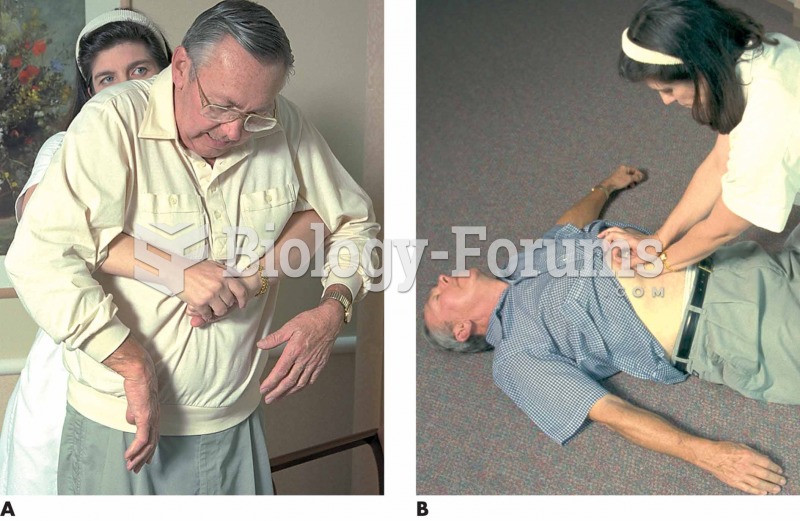This topic contains a solution. Click here to go to the answer
|
|
|
Did you know?
Most women experience menopause in their 50s. However, in 1994, an Italian woman gave birth to a baby boy when she was 61 years old.
Did you know?
All adults should have their cholesterol levels checked once every 5 years. During 2009–2010, 69.4% of Americans age 20 and older reported having their cholesterol checked within the last five years.
Did you know?
Medications that are definitely not safe to take when breastfeeding include radioactive drugs, antimetabolites, some cancer (chemotherapy) agents, bromocriptine, ergotamine, methotrexate, and cyclosporine.
Did you know?
In the United States, an estimated 50 million unnecessary antibiotics are prescribed for viral respiratory infections.
Did you know?
In 1864, the first barbiturate (barbituric acid) was synthesized.
 Administration of abdominal thrusts (the Heimlich maneuver) to (A) a conscious victim and (B) an unc
Administration of abdominal thrusts (the Heimlich maneuver) to (A) a conscious victim and (B) an unc
 Apply passive touch over the eyes and cheeks to finish. Place the hands, using very light pressure, ...
Apply passive touch over the eyes and cheeks to finish. Place the hands, using very light pressure, ...





